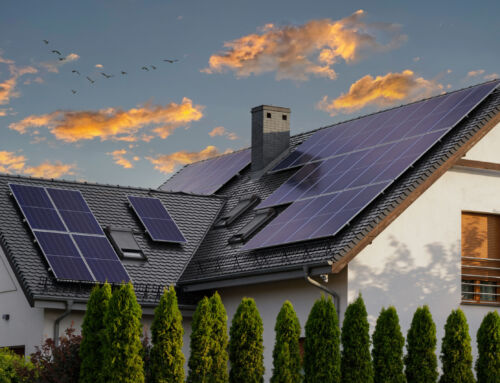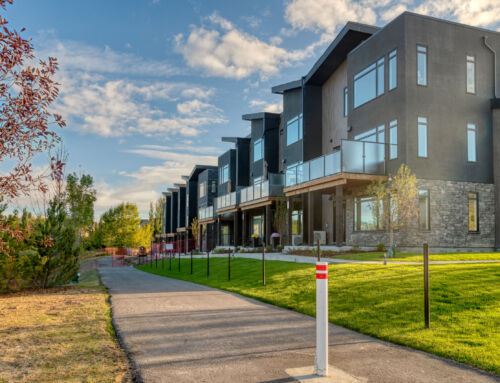As there has been a big push towards efficient appliances and cost-saving techniques, we are seeing tankless water heaters installed in new homes and retrofitted into existing homes. As a homeowner, it is important to understand why there has been a shift towards tankless water heaters, and what the implications are if you want one installed.
Until recently, the most common method of heating our water was to have a large storage tank installed typically in the basement. This would range from 40-50 gallons up to 100-gallon tanks, or even installing several tanks, depending on the size of the home and how much hot water the occupants of the home would use. These systems were great, you would turn on the tap and within seconds you had hot water. Unfortunately, these systems are not energy efficient compared to the new tankless systems for several reasons.
Firstly, a lot of energy is wasted heating the water. When ignited, a flame at the bottom of the tank would heat the steel, and in turn, heat the water inside. The steel on these tanks are thick enough to withstand the pressures and constant heating, but the tradeoff is a lot of energy is wasted just to get the tank hot enough.
On top of that, there is the heat that goes out of the exhaust from burning the gas to heat the tank. On older models, the heat in the exhaust was the only method of taking the exhaust gas out of the house. Hot air would rise and along with it take the exhaust from the tank. On newer models, the exhaust is pushed out by using a fan on the top of the tank but that does not mean they don’t waste heat.
When you turn on a hot water storage tank for the first time out of the box, they are probably between 60%-70% efficient at heating the water. That means if you spend $100 on gas to heat the water $30-$40 dollars is wasted heating the tank itself or going out the exhaust. And every day that the tank is being used (which they are on all the time), they lose efficiency so $30 dollars wasted turns into $40 or $50 dollars as the tank gets older. On top of wasting energy during the heating of the water, these systems are slow. Very slow. It can take almost an hour to heat 50 gallons of water to the temperature they are set to which is typically around 50°C or 120°F. And as the tank gets older, it only takes longer to heat the same amount of water to the target temperature.
Another issue with a hot water storage tank is that they heat the water even when you don’t need it. Whether you leave for work in the morning, go away for the weekend, or go on a nice family vacation for 2 or 3 weeks, the tank stays hot. Most newer models have a “vacation” function which will turn down the heat of your hot water heater, but unless you’re turning it off it will continue to run costing you money.
New tankless water heaters (also known as on-demand or instantaneous water heaters), do the same task as the older hot water storage tanks but are much more efficient at it. The energy efficiency of these systems is phenomenal. Systems can be purchased that are 97-98% efficient. This means they only waste $2-$3 dollars for every $100 you spend on heating water. On top of that, they only heat water when you want it. If you want to take a shower, it produces hot water for the shower, when you are done, it stops making hot water and waits for the next time you need it.
WOW! That’s perfect. It only heats when I need it and it only wastes a few dollars compared to the storage tank. I want one.
There is some important information that you need to know before you rush out to get one. The first complaint is usually about the price. It doesn’t matter if you are retrofitting one into a home that you already have or are negotiating for a new home that you want to build, these systems do cost more at the initial purchase than a storage tank.
Once you have the system, the first thing that we usually hear is that it doesn’t heat enough water. I can’t turn the dishwasher on, start the laundry and shower at the same time but with the old tank I had in my last place I had no problem doing this. Well, you are right. These systems cannot produce enough hot water to operate everything in your home at the same time. In Alberta, these systems are limited to around 5 gallons of hot water per minute. Enough to fill a bathroom sink or 2, fill up the tub for a bath, have a shower, do some laundry or run the dishwasher. Just not all at once.
The reason these systems can’t produce enough water to run everything is because Alberta is considered to be a cold climate location. The water that comes into our homes even in summer is only a few degrees above freezing. The system needs to heat that water to a temperature that we can use so we sacrifice the amount of hot water the system can generate at any one time. If we go from turning on sinks and showers and laundry and dishwashers all at the same time, to operating one at a time, these systems will outperform the storage tank. It can take up to an hour to heat 50 gallons of water in a storage tank while the tankless water heaters can get upwards of 300 gallons of hot water in that same hour.
Then we come down to maintenance. Technically the hot water storage tank needs maintenance but we stick them in our basements, where they will usually go unnoticed and unmaintained for 10 years until one day, we either have no hot water, or we go downstairs and find water on the floor. To find the best way to clean your water heater, we prepared a helpful video that you can watch here.
Tankless hot water systems require a bit more attention and need a regular routine maintenance. At a minimum, they need to be looked at and flushed yearly (sometimes more depending on usage). This system flush is to remove hard water deposits from inside the system. There are reminders on the system to do this and if too much time passes between the flush, the system may stop working to prevent damage to the internal parts. Looking up the best way to flush your system will be a helpful resource to keep handy!
Tankless water heaters have been making a splash in terms of both a cost-effective method of heating your water and reducing your carbon footprint. Before installing one, price and usage must be taken into consideration, as well as how often you’ll be willing to maintain your heater. With proper care, a tankless water heater will keep you bathing in warmth for years to come.







Connect